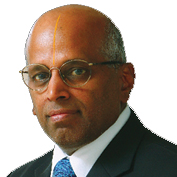Last month, the 122nd Constitution Amendment Bill was passed in the Rajya Sabha, India’s upper house of parliament. This has been a historic amendment and the most significant step in the progress towards a uniform goods and services tax (GST) regime. GST represents the biggest tax reform India has undertaken since independence. It is an ambitious reform with promises of integrating a fractured common market among the states and allowing businesses to have seamless credit across state boundaries, promising a big boost to business across India.

Partner
Lakshmikumaran & Sridharan
The benefits of GST are well documented with over 160 countries giving in to its attractions (Japan enacted a GST law in 1950 but did not give effect to it, then repealed it, only to return to it 30 years later). Why did India drag its legs for a decade?
The first challenge posed for the legislators was the need to retain the “sovereignty” of the states. The states were unwilling to give up their taxing powers to the centre having battled for years for central sales tax compensation. This meant that that the GST model proposed was a dual GST model allowing both the centre and the states to levy and collect GST. In order to ensure a common unified market, the system provides for credit across state borders. While the states and the centre agreed on this model, it creates unique issues for the taxpayer, which are discussed below.
You must be a
subscribersubscribersubscribersubscriber
to read this content, please
subscribesubscribesubscribesubscribe
today.
For group subscribers, please click here to access.
Interested in group subscription? Please contact us.
你需要登录去解锁本文内容。欢迎注册账号。如果想阅读月刊所有文章,欢迎成为我们的订阅会员成为我们的订阅会员。
The second challenge faced in relation to GST implementation in India is linked to estimates of tax collection and rates of tax. There has been a raging debate among the political parties about whether a rate beyond 18% would detrimental. This is linked to the underlying issue that it has been difficult to predict the actual tax collections by the individual states post GST. States today levy value-added tax (VAT) on the price of the goods including excise duty. This would no longer be possible. States also don’t provide any credit for service providers, or any taxes for transactions outside their state. The uncertainty of tax collections led to proposals for additional tax of 1%, disagreements over rates, and arguments over inclusions and exclusions of goods from GST.
The final challenge involved various miscellaneous matters relating to inter-state dispute resolution mechanisms, unfamiliarity with how the GST will work, and status of taxes such as entry taxes and entertainment tax. These created unquantifiable uncertainties and contributed to the delay in the GST.

Partner
Lakshmikumaran & Sridharan
All this has however been overcome with the passing of the Constitutional Amendment Bill. Now the focus is back where it should always have been – on the taxpayer. With the delay of over two years to pass the bill, the government is keen to have GST in place by 1 April 2017. That gives businesses in India only a few months to get ready for the transition.
The main problem is that India’s dual GST model poses unique challenges. While GST integrates the country as a single market and allows for one GST to be imposed on transactions, it splits taxpayers into 31 taxable persons (assuming they have operations in all states) or as many persons as the number of states in which they have operations.
The taxpayer is omnipresent in GST. Taxpayers must provide details of their input and input services across their several registrations and file returns across these registrations monthly. They must select their customers correctly and hope their vendors don’t make mistakes. Any errors would cost the taxpayer valuable credit. India not only requires compliance with the law but also a synchronized performance from its taxpayers.
While this seems challenging and taxing for businesses, it is a great opportunity for India to embrace information technology (IT) and for businesses to review their supply chain. GST requires good tax understanding with a robust IT backbone. GST in the long run will ensure more compliance, with knock-on effects on income tax law and other laws.
The transition is going to depend on being able to have taxpayer software speak seamlessly to the Goods and Services Tax Network, developed by Infosys. The government has been proactive in releasing the draft Model GST law early and interplaying the provisions with what is possible in IT. It is now up to businesses to pick up the threads and get ready for transition in the best possible way.
You must be a
subscribersubscribersubscribersubscriber
to read this content, please
subscribesubscribesubscribesubscribe
today.
For group subscribers, please click here to access.
Interested in group subscription? Please contact us.
你需要登录去解锁本文内容。欢迎注册账号。如果想阅读月刊所有文章,欢迎成为我们的订阅会员成为我们的订阅会员。
V Lakshmikumaran is the managing partner and L Badri Narayanan is a partner at Lakshmikumaran & Sridharan. Teams from the firm acted as domain expert consultants for Infosys on the Goods and Services Tax Network.
B-6/10 Safdarjung Enclave
New Delhi – 110 029
India
Contact details
Tel: +91 11 2619 2243 / +91 11 4129 9900
Fax: +91 11 2619 7578 / +91 11 4129 9899
Email: LSDEL@lakshmisri.com
Website: www.lakshmisri.com



























